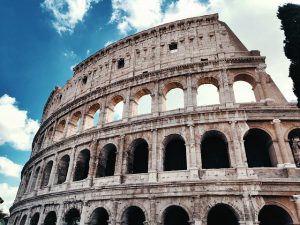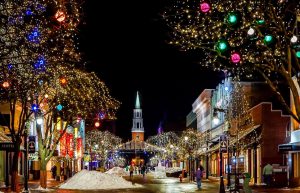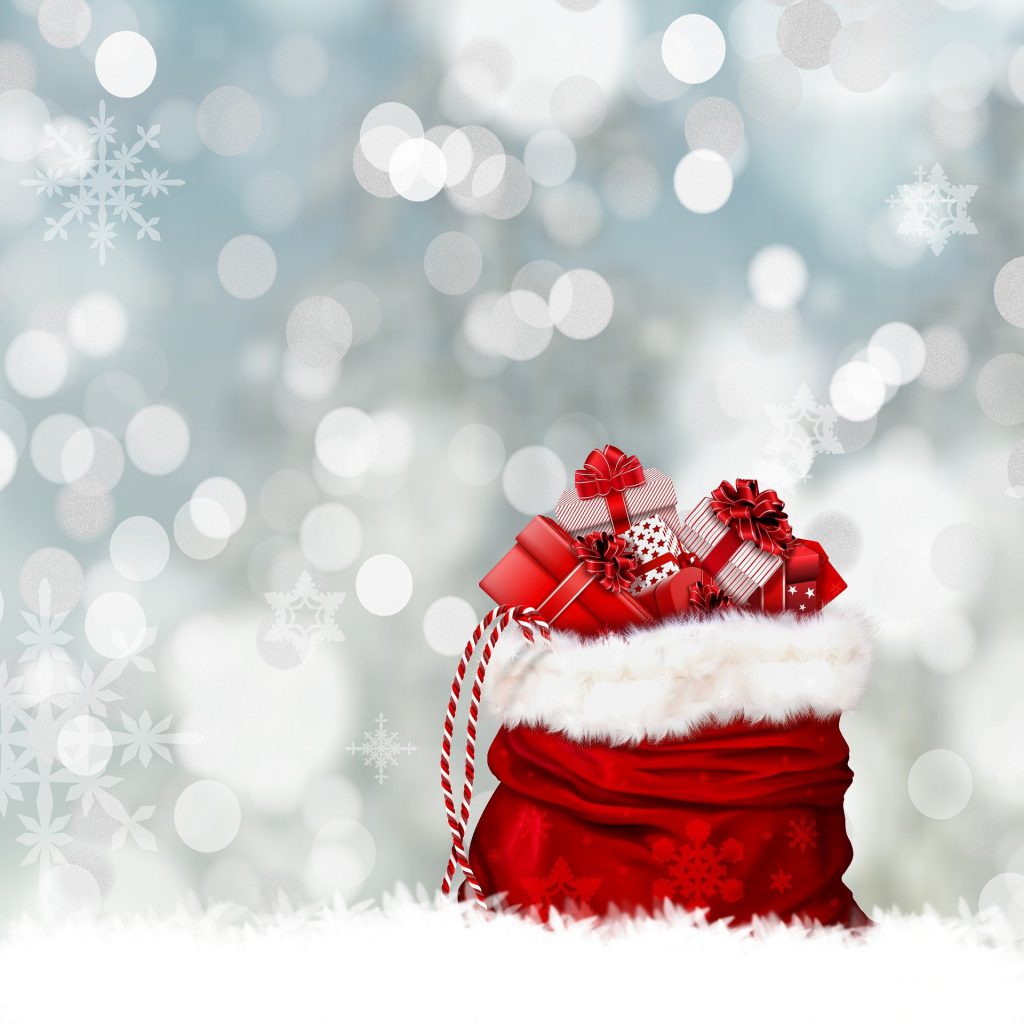

Christmas Day is one of the most significant festivals of both religious and secular tradition. On December 25th each year, many people celebrate the birth of Jesus Christ and others associate the Christmas as a day of giving and thankfulness. Christmas is celebrated with many Christmas traditions that vary according to culture and family.
Some families celebrate Christmas by holding a meal, exchanging gifts, attending a religious service, and going to parties and gatherings of friends and family. It is largely seen by many as a time to appreciate loved ones. Most workers and students in the United States will have Christmas off even though it is not considered a public holiday.
There are many other different traditions of Christmas. Observers may form groups of carolers to sing Christmas songs throughout the neighborhood. Some may mark Christmas with volunteer work with shelters or soup kitchens.
It is believed that Jesus was born sometime between 7 and 2 BC. Two of the four canonical gospels mention his birth, although it is not believed to have actually taken place on the date of Christmas. Rather, Christmas began to take place during the time of the winter solstice in order to distract from and absorb the pagan festivals associated with the time of year.
Some Christians celebrate the birth of Jesus and the fulfillment of the Messianic prophecy. The two biblical accounts from Luke and Matthew have evolved into a popular tradition of the tale, stating that Joseph and Mary traveled to Bethlehem on a donkey in order to take part in a census. The couple approached an inn, but there was no room, so the couple was put up in a stable with a manage and farm animals. The baby Jesus was then born and was placed in the manger. Jesus was visited first by shepherds in surrounding fields that were told by angels of Jesus’s birth and to go and see the child. Jesus was also visited by three wise men, guided to the nativity with a star, followed by other astrologers and scholars who had noticed the star.
The celebration of Christmas on December 25th has been observed since the fifth century. During World War I, a truce was observed on Christmas Eve in 1914 and 1915.
Before the Christian festival, a large pagan celebration of the time was Yule. Yule was a twelve-day festival observed by Northern Europeans that was mostly absorbed into Christmas celebrations. The celebration’s theme was the cycle of life given by the sun and observers lit fire to symbolize this. The Yule log was burned to honor Thor, a Scandinavian god. Many observers burned the log until it was ash or until only a little piece was left, which was kept for good luck. These ashes or pieces were used as fertilizer or medicine as well. French peasants often kept these ashes under their beds to protect against thunder. In Poland, the solstice was observed with themes of forgiveness and selflessness, often marked with sharing food or giving to the needy.
During Christmas many religious services will feature Advent wreaths and candles and a recreation of the nativity scene. Some churches hold a Midnight Mass. Services will not only celebrate the story of the nativity but the overall significance of Jesus Christ, as it is viewed as the coming of the Savior, a very joyous event. Passages from the nativity story will often be read along with the singing of the many religious songs and hymns associated with Christmas.
While many religious themes tie into the more secular traditions of Christmas Eve, many traditions evolved from pagan rituals or cultural folk tales:

The tradition of Christmas Trees comes from the pagan ritual observed during the winter solstice in which involved tree worship carried out through decorating trees. The tradition of decorating a tree for Christmas likely came from Germany during the nineteenth century, which then spread to England and other areas. The pagan involvement of plants has also evolved into the tradition of using holly and mistletoe in Christmas decorations. If observers find themselves underneath hanging mistletoe, they are expected to kiss.
Many contemporary observers decorate the Christmas tree on Christmas Eve, although most will decorate the tree before this. The tree will be decorated with ornaments, lights, ribbons, and other decorations with an angel or star on top in honor of the nativity story.
In America, Santa Claus is a Christmas figure that brings toys to children on Christmas Eve. He is stationed in the North Pole, where he works all year with his elves as helpers to make toys to bring boys and girls on Christmas Eve. Many children will send Santa a list of things they want for Christmas or visit Santa at the mall.
On Christmas Eve, Santa loads up the toys in a red sack into his sleigh, which is pulled by twelve reindeer. The reindeer are led by Rudolph, a reindeer with a bright red nose that can guide the reindeer throughout the world at night. Rudolph used to be teased by the other reindeer for his red nose, but this stopped when it was put to good use on Christmas Eve.
Santa visits each child’s house on Christmas Eve, leaving their gifts under the tree or by the fireplace. He also stuffs stockings that each child hangs over the fireplace with treats, trinkets, and other goodies. Many children leave out cookies and milk for Santa to enjoy as he leaves presents.
On Christmas morning, children will joyfully awaken and make their way to the fireplace and Christmas tree in order to see what Santa brought them. Many families open Christmas presents on Christmas Day but some may exchange gifts on Christmas Eve.
 During the Christmas holiday season many observers will decorate their homes and communities with Christmas Lights. This practice comes from the tradition of decorating Christmas trees with candles in Germany during the 18th century. Christmas trees are still decorated with lights along with households and the exteriors of houses, which may feature elaborate designs and patterns.
During the Christmas holiday season many observers will decorate their homes and communities with Christmas Lights. This practice comes from the tradition of decorating Christmas trees with candles in Germany during the 18th century. Christmas trees are still decorated with lights along with households and the exteriors of houses, which may feature elaborate designs and patterns.

In all of this, where does Santa Claus come in, and what does he have to do with Christmas? St. Nicholas of Myra lived in what is now part of Turkey; he spoke Greek and was no doubt bronzed under the Mediterranean sun. His transformation into Santa Claus was a gradual one, that began with stories of him as a protector of children during his life. One of these stories was that he secretly supplied dowries to three girls who lived in poverty by tossing bags of gold into their windows at night.
The rise of Protestantism saw the decline of saints’ days in countries affected by it since Protestants do not revere saints in the way that Catholics do. One exception to the pattern was in the Netherlands, where Saint Nicholas continued to be remembered as a protector of children. The story of the three dowries had by this time grown into a legend, one detail of which was that the gifts landed in the children’s shoes. On the eve of St. Nicholas’ Day, Dutch children would leave their shoes out for the saint to fill with small gifts. Early Dutch settlers in North America brought this tradition to their city of New Amsterdam, which today is Manhattan.
The shoes of the Dutch children became stockings hung by the fireplace in the famous poem by Clement Clarke Moore – the poem which is the origin of much of modern American Santa Claus imagery, including the flying sleigh pulled by reindeer, Santa’s descent down the chimney, and the white beard and merry, twinkling eyes.
Still, the poem does not give Santa a backstory. How was his place of origin transferred from the coast of Asia Minor to the North Pole? It was inevitable. L. Frank Baum, the author of the beloved Oz books, wrote a backstory, titled The Life and Adventures of Santa Claus, which placed Santa’s origins in such magical fantasy lands as the Forest of Burzee and the Laughing Valley of Hohaho, presided over by magical beings like the Great Ak. But before L. Frank Baum, there was Thomas Nast, a cartoonist. At that time, no explorer had yet reached the North Pole, and so the North Pole was a place of mystery and imagination. It seemed a suitable retreat for a mysterious character associated with snow; for snow at that time was deeply entrenched in the American psyche as part of Christmas, and it made sense to think of Santa and snow as always together.
But St. Nicholas’ day is December 6th, more than two weeks before Christmas. How did he become a Christmas character? As the holiday shopping season expanded – until we hear Christmas music starting on Black Friday, that is, the last Friday of November – every December occasion was incorporated into the “Christmas season.” It is difficult to remember anymore that the four weeks prior to Christmas were originally the Advent season, and that the Christmas season actually began on Christmas Day and lasted twelve days. An old superstition held that it was bad luck to bring any Christmas greenery into the house before Christmas Eve. How different is today’s custom!
In ancient Europe, especially in the north, the reversal of the sun’s decline was seen symbolically as a rebirth, prefiguring the rebirth of dead vegetation that would occur as spring approached. Stonehenge was inactive ritual use from the stone age through the bronze age, and the alignment of keystones indicates that it could serve as a calendar of sorts, marking the dates of solstices and equinoxes.
The Roman god Saturn was a god of agriculture, and the ancient Romans believed that there was a long-ago “golden age,” much like the Garden of Eden in that people lived in innocence and abundance without labor. The Roman festival of Saturnalia was held on December 17 through 23 and was a time when people reenacted that golden age by temporarily suspending social class distinctions and labor. During these festivities, a pine tree was cut down, brought to the temple, and decorated.
Rome, in a Mediterranean climate, experienced fairly mild winters compared to the lands further north. Among Germanic tribes, the onset of winter meant that pasturage became scarce, so cattle were slaughtered to reduce their numbers. The abundance of fresh meat led to the Yule feasts, beginning on the shortest day, the winter solstice. Celtic tribes, too, placed great significance on the turning of the sun at the solstice. Germanic and Celtic peoples alike lived by necessity in tune with nature’s rhythms and developed rich imagery of nature symbolism associated with the seasons. As oak trees lose their leaves through the fall, a seemingly magical transformation occurs in December: the green tufts of mistletoe seem to appear suddenly on the now bare trees. The endless cycle of seasons was symbolized by the circle of a wreath, with no beginning and no end.
Into this matrix, Christianity expanded out of the Middle East, aided by the infrastructure of the Roman Empire. As the new faith expanded out of its Jewish origins, it experienced an infusion of ideas from converts of many other ethnic origins. Since the Gospel writers had not felt it necessary to record the date of Jesus’ birth, this became a subject of inquiry. The Annunciation of Jesus’ conception was thought to have taken place in March, and counting nine months from then comes to December, however according to the New Catholic Encyclopedia, “The true birth date of Christ is unknown.”. By this time according to historians, early Christianity was competing with the Roman religion, as a result, Christmas was set to coincide with Saturnalia, the date of the festival of Sol Invictus.
In the fourth century, Origen and Arnobius both rejected the celebration of birthdays as a pagan practice, so presumably, they would not have celebrated Christ’s birthday either. In the seventeenth century, Puritans and Scottish Presbyterians banned Christmas, considering it to be a papist (that is, Catholic) celebration. Today, there are Christians who speak out against Christmas because of its imagery borrowed from pagan beliefs; they believe that this makes it a pagan festival that does not belong in Christian life. There are also valid concerns that in the frenzy of holiday shopping, materialism is what is really being celebrated.